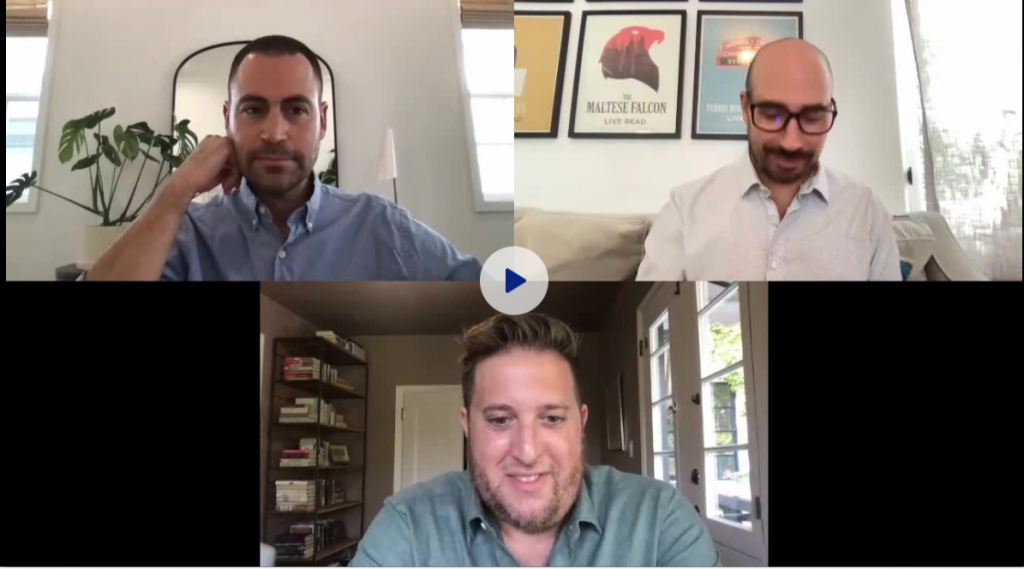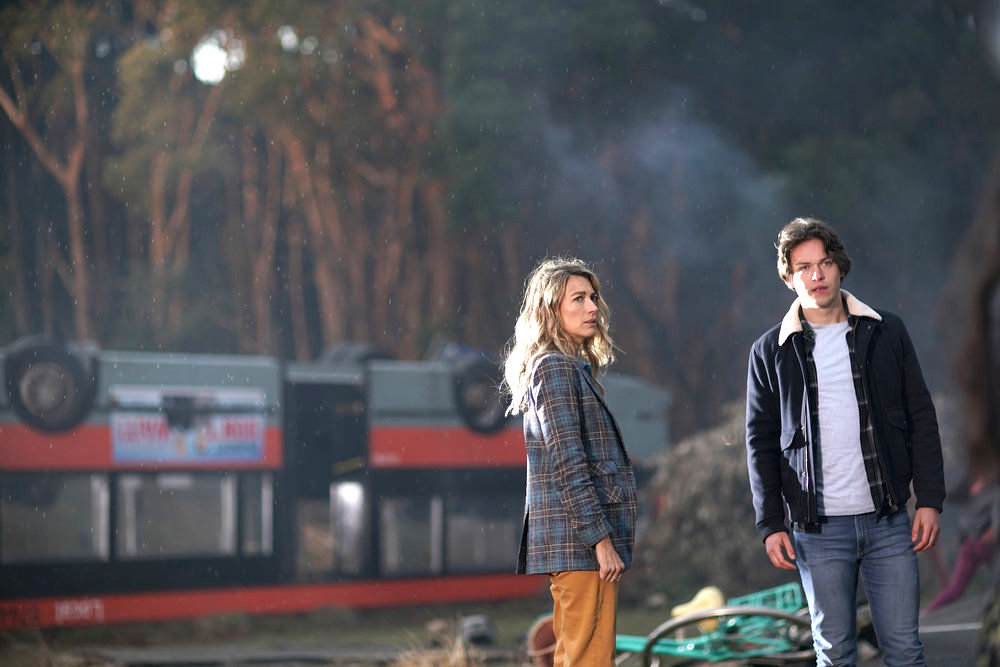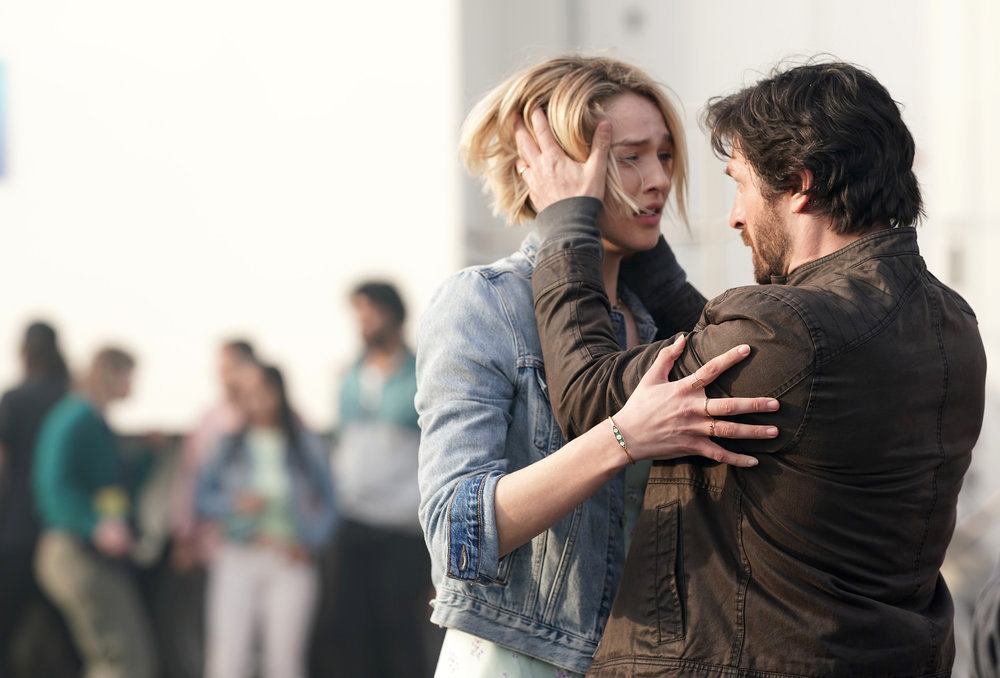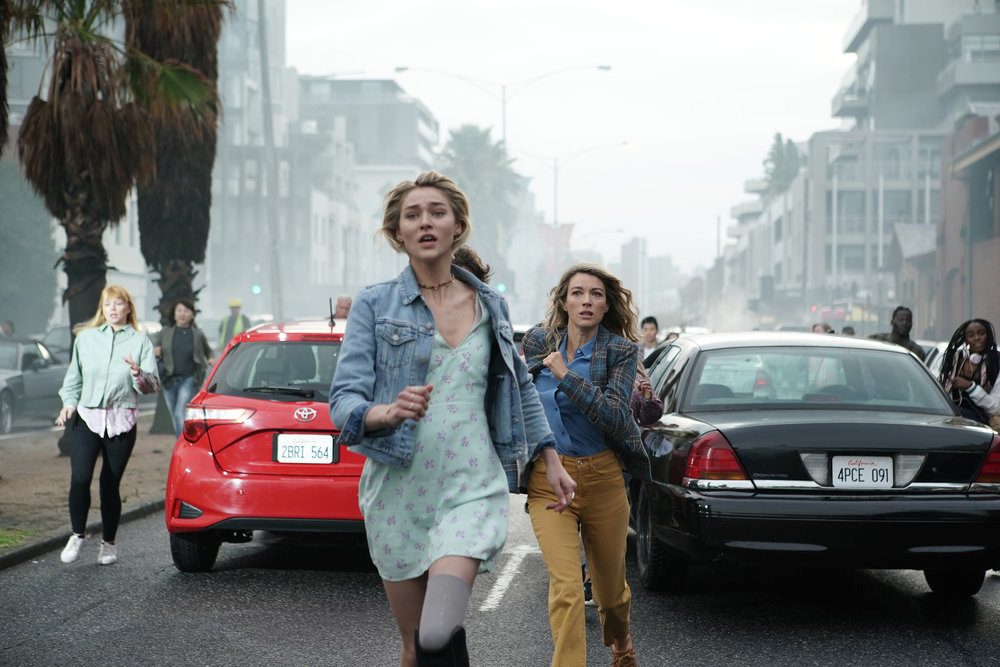NBC is gearing up for its next event television spectacle. Inspired by the immensely popular films and event TV shows like Lost, Indian Jones, and Jurassic Park, La Brea begins when a giant sinkhole splits Los Angeles into the “up above” and “down below” worlds. Families are split and survivors must band together to find a way home. Showrunners David Appelbaum, Steven Lilien and Bryan Wynbrandt discussed the process to get this family drama on the screen with Creative Screenwriting Magazine.
“We wanted to create an action-adventure show inspired by Spielberg,” declared Appelbaum. “We needed a strong emotional context to it.” At its core, its a story of a family divided and their journey to be reunited. La Brea is TV show that can be watched together as a family and bring them together both physically and emotionally. There’s also a real escapist quality to La Brea as the characters are transported into a new fantastical adventure each week to really keep the audience invested.
Where is La Brea?
La Brea is a main road in Central Los Angeles and also refers to the La Brea Tar Pits nearby. Many Ice Age Fossils have been discovered there and exhibited at the museum. “There is something mysterious and ethereal about La Brea that you can’t quite put your finger on so you don’t know exactly what the show is about,” added Appelbaum. This sentiment accurately reflects the tone and feeling of the show.
The sinkhole opening was the genesis of the show and the TV series developed from there.

Steven Lilien, Bryan Wynbrandt (up above) & David Applebaum (down below)
Pitching the tone and magnitude of La Brea required a carefully considered strategy. “The references to Lost were inevitable, but we actively steered away from any derivative storytelling,” stated co-showrunner Bryan Wynbrandt. A defining feature of Lost was its extended flashbacks embedded into each episode. “We pitched the tone and feeling of the show as a bit of Jurassic Park with a bit of Back To The Future.” The key point of difference in La Brea was building it as a family show rather than a group of strangers trying to survive in a strange land and return home.
A sinkhole story could conceivably be set anywhere. La Brea was specifically chosen because it’s linked to the way the story unfolds. The location adds to the mystery of the show. “La Brea is a pre-historic place in the middle of a city,” said Wynbrandt. “It captures the imagination,” continued Appelbaum. The location forms part of the mythology and lore of the show.
The characters define the show, not the sinkhole – Steven Lilien
“We started the story at their lives before the sinkhole,” said Lilien. “We discussed what are most interesting characters we’ve seen or haven’t seen?” When these characters are thrust into a critical environment, the writers can plot what they need to learn at this crossroad in their lives. “We looked their personalities, their problems, things they haven’t confronted that start to bubble to the surface,” he continued. This was the basis for generating the character arcs over the season’s five episodes.
The two worlds that the characters inhabit, also ponder some larger questions about life and humanity. The people in the up above world are trying to figure out what happened, while those down below are trying to survive.
A unique element of La Brea is that it’s “of this time,” according to Lilien. The show embraces the polarized, ideological and political divisions that currently create conflict in society. “We’re taking a cross-section of diverse people with widely differing beliefs and forcing them to work together. That makes the show special.”
On a more positive note, La Brea wants to convey that people with diametrically opposed beliefs can respect and transcend their differences and work as a unified humanity. This is the take home message the shlwrunners hope the viewers receive.
We’re more alike than different. People wear shields for different reasons. In this setting, we can slowly take these shields down and see where this commonality is. The way to grow is to see yourself in others, and reflected in different situations and eventually understand them – Bryan Wynbrandt
Writing The Pilot Episode
The function of any TV pilot involves writing to establish the world, the characters, the conflict, and the tone of the show. “Our primary intention was a simple emotional hook for the A story,” said the creator, David Appelbaum. “Josh [Harris] (played by Jack Martin) gets severely injured. The story explored whether his mother Eve (Natalie Zea) can save his life. This context is the spine of the episode. It’s the jumping off point to hang off so many additional story threads,” where the writers can introduce other characters and other mysteries.
When the sinkhole “sunk” Los Angeles, the Harris family was split into two groups – mother (Eve) and son (Josh) and father Gavin (played by Eoin Macken) and daughter Izzy (Zyra Gorecki). This was a deliberate action to encourage each group to explore their issues. “Gavin and Izzy enter the episode with a complicated relationship,” said Appelbaum. “Both are struggling with different things. Izzy is an amputee and Gavin has his own issues to grapple with.”

Eve Harris (Natalie Zea) & Josh Harris (Jack Martin). Photo by Sarah Enticknap/ NBC
As the series progresses, the relationship between Josh and Gavin and Eve and Izzy also unfolds, “because it exposes unresolved conflict they can’t directly address with each other,” continued Wynbrandt. The conflict is reframed in a different light because the discussions are indirect as they occur with the other parent/sibling pairing.
The initial plans for La Brea began in a mini TV writers’ room with David Appelbaum, Bryan Wynbrandt, and Steven Lilien accompanied by three other writers. “Once the mini-room wrapped, we transitioned into a regular TV writers’ room with four more writers,” added Appelbaum.
“We had a very clear goal of what we wanted to accomplish in each episode,” he continued. “We wanted spectacle, emotion, action, and the mystery in the serialized story.” The main TV writers’ room was transformed into a place to organize these elements. The writers examined the thrusts of the up above and down below A and B stories. What are Eve and the survivors in the down below and Gavin and the up above people doing?

Izzy Harris (Zyra Gorecki) & Gavin Harris (Eoin Macken). Photo by Sarah Enticknap/ NBC
Lastly, they plotted they over-arching mystery of the C story. Each story (even within a story track) was color-coded to keep track of things. The relative proportions of each was dependent upon how much screen time was required to get to know the characters, especially in the down below stories.
Each story track was broken linearly and then reconstituted into a complete episode. “We would send our writers a woven story exactly as it would appear on screen,” stated Appelbaum.
It’s easy for the audience to get lost in the stunning visual effects of the show (the sinkhole didn’t actually happen). In order to attenuate its potentially distracting effect and actually enhance the characters, the writers considered the emotional throughline first and foremost in every visual effects sequence. “We didn’t have spectacle for the sake of spectacle,” mused Appelbaum.
La Brea also examines the concept of second chances. What if you had a chance to do things differently? What if you didn’t? These are all relatable questions that the audience can ponder after watching the show. Everyone looks back at good and bad moments in their lives and wonders what if…?
